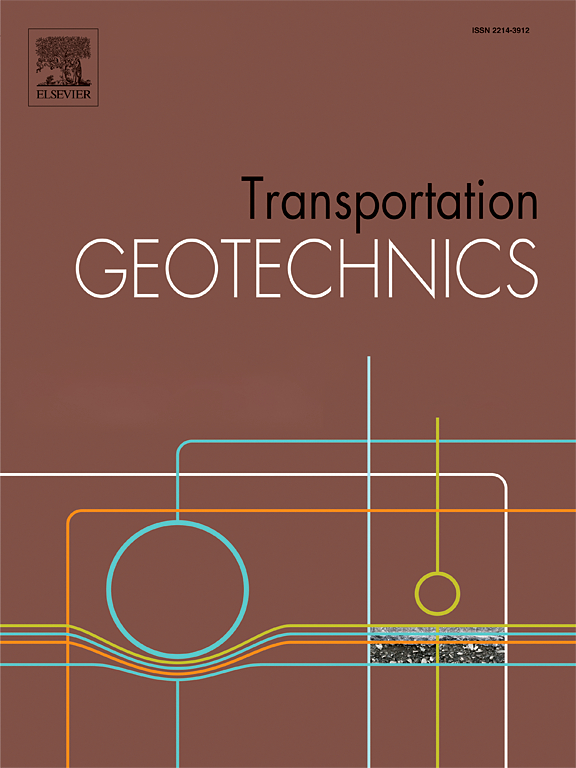Vibration of the track-soil system due to a harmonic moving load on railway tracks resting on layered soils by 2.5D approach
IF 4.9
2区 工程技术
Q1 ENGINEERING, CIVIL
引用次数: 0
Abstract
Research on the vibrations of track-soil coupling system has been enhanced by the rapid construction of high-speed railways worldwide. As part of the effort to address this problem, a dynamic analysis model composed of the track and soil subjected to a harmonic moving load is analyzed by the 2.5D approach. Focus is placed on the response of the track-soil system caused by the harmonic moving load at sub-critical, critical, and super-critical speeds. The track is modeled as a three-layered structure comprising the rails, sleepers and ballast and the underlying soil is simulated by the 2.5D finite and infinite elements. The train load is treated as a single moving load oscillating with self frequency . A thorough investigation is presented for the effects of the moving load with various self frequency at the sub-critical, critical, and super-critical speeds on the ground response. In addition, the effects of the rail and soil properties on the rail response were assessed, as well as on the differential responses of the rails and the ground. The findings of the paper include: (1) The critical speed of the soil is deeply affected by the material properties of the soil and the track, as well as the self frequency of the load. Particularly, using a stiffer soil or a lighter track helps to mitigate the ground response, while increasing the critical speed . (2) A decrease in the shear wave speed ratio of the soil tends to enhance the fluctuation of the ground vibration. At zero self-frequency, increasing soil layer depth H may increase the maximum displacement, while decreasing the vibration fluctuation; as the self-frequency rises, the effect of soil layer depth H on ground response further diminishes. (3) An increase in the self frequency of the moving load tends to decrease both the ground response and the level of fluctuation. (4) The higher-frequency rail response for a lighter track on stiffer soils is pronounced prior to arrival of the load at , while the lower-frequency rail response for a heavier track on a softer soil is more significant after .
求助全文
约1分钟内获得全文
求助全文
来源期刊

Transportation Geotechnics
Social Sciences-Transportation
CiteScore
8.10
自引率
11.30%
发文量
194
审稿时长
51 days
期刊介绍:
Transportation Geotechnics is a journal dedicated to publishing high-quality, theoretical, and applied papers that cover all facets of geotechnics for transportation infrastructure such as roads, highways, railways, underground railways, airfields, and waterways. The journal places a special emphasis on case studies that present original work relevant to the sustainable construction of transportation infrastructure. The scope of topics it addresses includes the geotechnical properties of geomaterials for sustainable and rational design and construction, the behavior of compacted and stabilized geomaterials, the use of geosynthetics and reinforcement in constructed layers and interlayers, ground improvement and slope stability for transportation infrastructures, compaction technology and management, maintenance technology, the impact of climate, embankments for highways and high-speed trains, transition zones, dredging, underwater geotechnics for infrastructure purposes, and the modeling of multi-layered structures and supporting ground under dynamic and repeated loads.
 求助内容:
求助内容: 应助结果提醒方式:
应助结果提醒方式:


